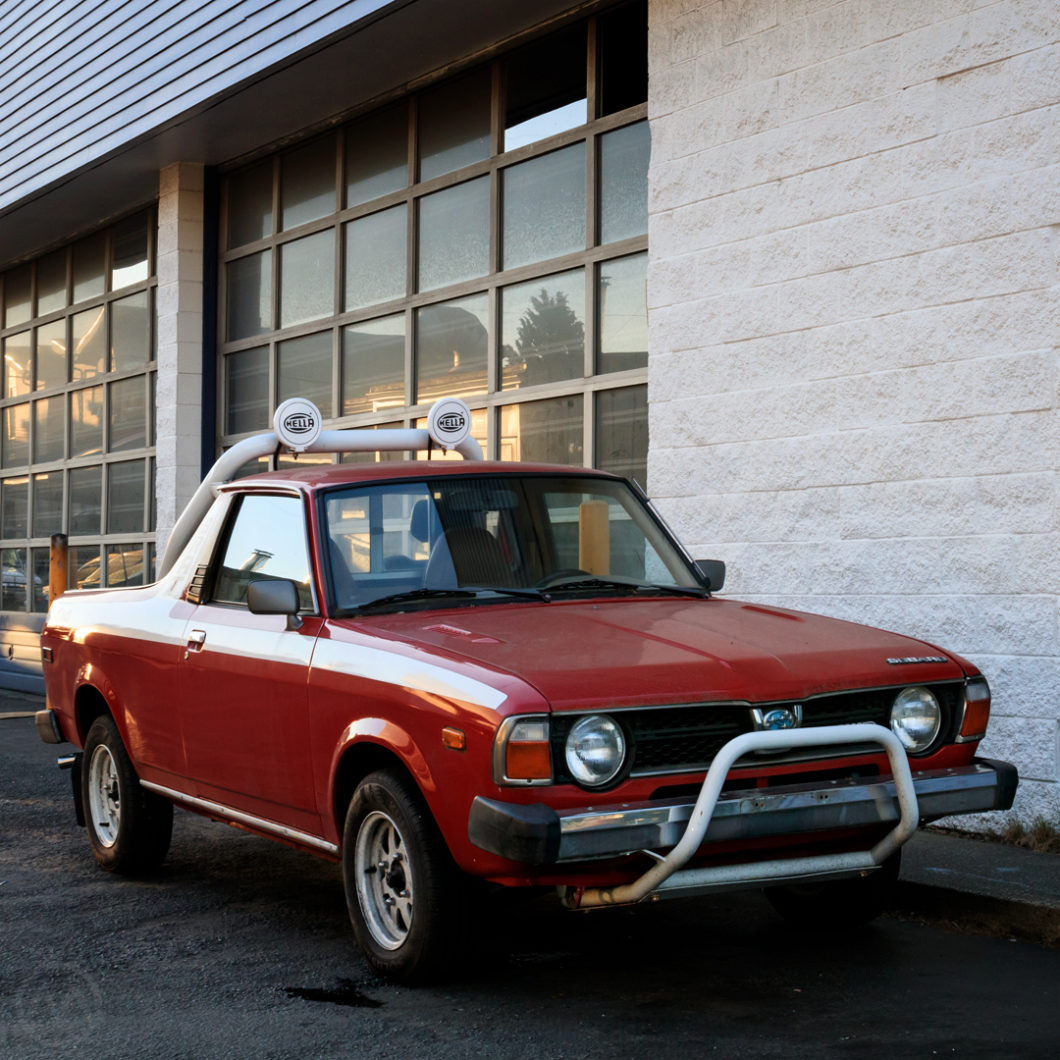Datsun and Toyota’s small trucks were selling like air conditioners in a heat wave. Ford and GM were getting in on the action with rebadged Isuzus and Mazdas (also sold under their own labels). Though Honda didn’t seem interested in such things, in the mid-1970s U.S. Subaru dealers wanted a small truck of their own.
What they got was the charismatic Subaru BRAT (Bi-Drive Recreational All-terrain Transporter); introduced in 1977. But it wouldn’t have happened if not for Subaru’s original 4WD wagon; first created, according to Subaru of America co-founder and longtime chief Harvey Lamm, for Japan’s forest service.
The origins of the BRAT lay in the Subaru Leone 4WD wagon. The exotic Jensen FF had been the first real 4WD production car, but only 320 were made. The Leone wagon, therefore, became the first volume production 4WD car, debuting in Japan in late 1972. According to Lamm, Subaru created the car in part for Japan’s Ministry of Agriculture, Forests, and Fisheries – who needed an all-terrain car.
4WD’s Potential for Subaru of America
In Japan, Subaru intended to sell about 3,000 units a year, but Lamm correctly saw considerable potential in establishing Subaru of America as a provider of tough, off-road capable vehicles.
Lamm lobbied hard to have the car come stateside, finally getting a grudging okay from Japan to do so provided the car didn’t have to be too altered for U.S. sale, which meant obtaining some regulatory favors for the car, officially a “multi-purpose vehicle.”
Fuji Heavy industries was rewarded with more than 10,000 units sold in that first year – a big number by Subaru of America standards at that time and far more than Japan had believed would sell. The 4WD wagon indeed did create a unique niche for Subaru and paved the way for much that came later.
The next step? Another unique model to take on those pickups.
Subaru’s idea for a truck was novel and simple – make a pickup shell for the circa-1971 Leone design and equip it with all the mechanical bits of the 4WD Wagon.
The BRAT’s bed was a little smaller than the competition’s since the Leone was a unibody and therefore a long-bed version would have meant yet another shell, but it was still reasonably capacious. Two tiny jump seats in the bed helped the vehicle skirt the Chicken Tax. This hefty 25% tariff has been levied on all imported trucks, including those from Domestic manufacturers sourcing global models, since 1964.
Making the BRAT Unique
In those days, Subarus were “Inexpensive, and built to stay that way,” which often meant few frills. But there was a long options list of accessories for the BRAT, some of which are seen here, and many were personalized – including the first one, owned by Lamm himself.
At first a U.S. exclusive (early BRATs in Japan were repatriated from North America as private imports), BRATs only got the largest Leone engines, starting with a 1.6 liter EA-71 flat four with about 68 hp. Not much, but the BRAT was light, agile, and utilitarian. Sales were encouraging in the early days and the BRAT spawned a few “coupe utility” imitators on similar light car platforms.
Despite that, and the celebrity endorsement of none other than Ronald Reagan, the BRAT never did steal much market share from the other imported trucks.
When the original Leone was replaced in 1979, the BRAT continued to use the old car’s body and mechanicals into 1981 (gaining a more powerful 1.8 liter EA81 version of the engine), only being restyled to match the newer Leone for 1982.
By that time VW’s Caddy and Dodge’s Rampage had arrived, as had Mitsubishi’s light pickup trucks in the mold of the Toyota and Datsun trucks. U.S. interest in car-based pickups flagged in the 80s. While conventional pickups got more popular, the car-based ones did not – by 1986, the BRAT and Chevrolet’s much-larger El Camino were the last two standing.
Importation of the BRAT ended in 1987, but the 2nd-gen BRAT was sold in other markets until 1993 under various other names. Lamm continued to run Subaru of America into 1990, around the time Fuji Heavy Industries bought the remaining shares of its U.S. importer that it did not already own.

